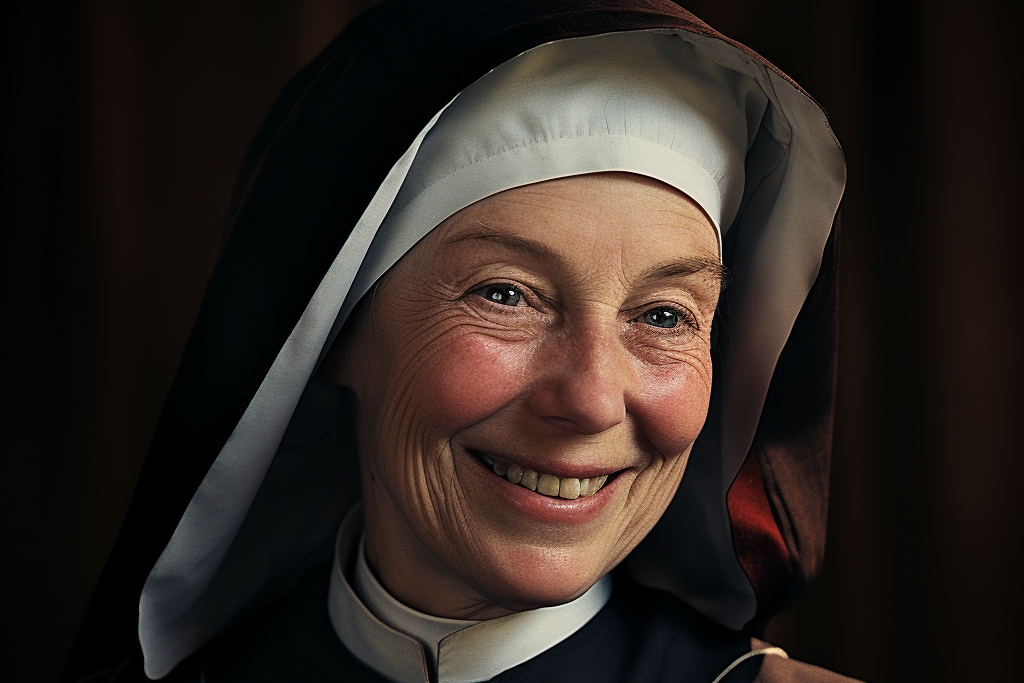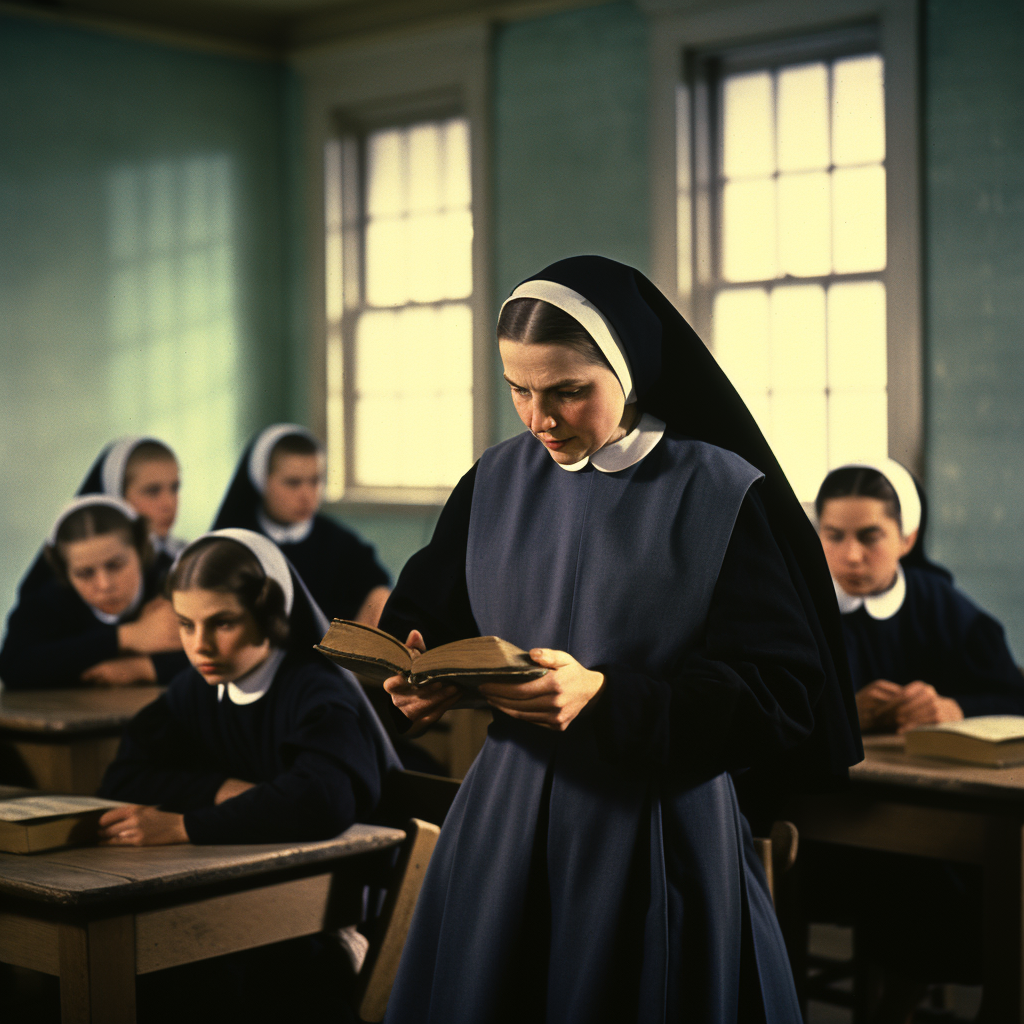
St. Marguerite Bourgeoys
St. Marguerite Bourgeoys
When they lived: St. Marguerite Bourgeoys lived from April 17, 1620, to January 12, 1700.
Where they lived: St. Marguerite Bourgeoys spent a significant part of her life in Ville-Marie, which is now known as Montreal, Canada. She was a French teacher and founder of the Congregation of Notre Dame of Montreal.
Notable world events during the time of their life:
- Thirty Years’ War (1618-1648): This devastating conflict shaped much of Europe during Marguerite Bourgeoys’ lifetime, involving religious, political, and territorial struggles among various nations and religious groups.
- Salem Witch Trials (1692-1693): In the Massachusetts Bay Colony, a series of witch trials and hysteria occurred, resulting in the execution of several people accused of witchcraft. This event highlights the complexities of societal fears and beliefs during the period.
- Scientific Revolution: Marguerite Bourgeoys lived during a time when scientific thinking was rapidly evolving. The works of prominent figures like Galileo Galilei, Johannes Kepler, and Isaac Newton laid the foundation for modern science, challenging traditional beliefs and encouraging empirical inquiry.
- Great Fire of London (1666): This catastrophic fire swept through London, causing widespread destruction and leading to significant urban planning changes. It was a pivotal moment in the city’s history and marked the transition towards more organized and fire-resistant architectural designs.
- Treaty of Westphalia (1648): Ending the Thirty Years’ War and the Eighty Years’ War, this series of treaties reshaped the political and religious landscape of Europe. It established the principle of state sovereignty and religious tolerance, contributing to the development of modern international relations.
- Glorious Revolution (1688): The overthrow of King James II in England marked a crucial turning point in constitutional history. This event led to the establishment of parliamentary supremacy and paved the way for modern constitutional monarchies.
- Enlightenment Era: Marguerite Bourgeoys’ lifetime coincided with the Enlightenment, an intellectual movement that emphasized reason, science, and individual rights. Thinkers like Voltaire, Rousseau, and Locke were shaping new ideas about society, government, and human nature.
Their patronage: St. Marguerite Bourgeoys is the patron saint of educators and the founder of the first uncloistered religious community in Canada. She dedicated her life to providing education to young girls, particularly from less fortunate backgrounds. Her legacy continues to inspire educators around the world who are committed to providing quality education and improving the lives of those in need.
Early Life
Saint Marguerite Bourgeoys was born in Troyes, France, on April 17, 1620. Marguerite, the seventh of thirteen children born to Abraham Bourgeoys and Guillemette Garnier, loved and cared for her siblings until her death.
Up until the age of 15, Saint Marguerite did not belong to the confraternity of the Congregation Notre-Dame attached to the town’s monastery. However, between the ages of 15 and 16, she made a decision to join the ritual associated with the Congregation.
Dedication and Devotion
Saint Marguerite knew she was destined for religious work. This was further confirmed after her divine experience with the Blessed Virgin, after which she saw a marked change in her life.
Paul De Chomedey, the governor of the French settlement at Montreal, New France, and brother to an Augustinian Canoness in Troyes, visited France in 1652. His sister was in charge of the sodality where Marguerite belonged. It was during this visit that he met Marguerite and invited her back to Canada with him to start a school in Ville-Marie, New France.
By 1653, Saint Marguerite Bourgeoys had accepted his invitation and left on a 3-month journey to New France.
Along with the joys of starting to do something with her life, this new land brought challenges and hardships. Instead of being deterred by these limitations, however, Saint Marguerite made the most of her situation.
Saint Marguerite assisted in the building of the institution. After the completion of the institution, she gathered a workforce to build the very first church in Ville-Marie, the Notre-Dame-de-Bonsecours Chapel, or the Chapel of Our Lady of Good Counsel. This church would be Ville-Marie’s first permanent church.
In 1658, St. Marguerite Bourgeoys convinced the governor to allow her to open a school in Ville-Marie. In April of the same year, she was provided with a vacant stable to be used as the school. This represented the first marked change in education in New France.

Legacy
St. Marguerite traveled out of France several times in search of new teacher recruits for her new school. It was during this time that she became guardian to Filles du Roi, young orphan girls sent by the monarch to start new families. She cared for the girls, acted as a matchmaker, and mentored them on their new path.
Through all this, St. Marguerite’s belief in spirituality continued to grow. She worked as a preacher throughout the colony as well as educating the local children.
Eventually, in 1669, François de Laval, the Apostolic Vicar, issued an ordinance that allowed the congregation of Notre-Dame to preach anywhere on the Island of Montreal. This enabled Saint Marguerite to widen her reach outside her community.
St. Marguerite Bourgeoys fought to have her community left uncloistered, and in 1670, she was presented with letter patents from Louis XIV,securing her community.
St. Marguerite continued to provide institutions for the betterment of the colony. She established a boarding school for girls and a school for the training of artisans.
Between 1678 and 1680, St. Marguerite established institutions in mission villages and Quebec. Her community remained very active and continued to grow in various countries.
On July 1, 1698, the congregation was “canonically constituted a community.”.
Saint Marguerite was a pioneer of the uncloistered congregation and liberating education. She continued to provide hope, charity, and service to the people until she passed away.
Death and Canonization
Saint Marguerite Bourgeoys spent her last years praying and encouraging her sisters to build a spiritual character. She died in her adopted home, Montreal, on January 12, 1700.
Saint Marguerite Bourgeoys was canonized by the Catholic Church in 1982, the process taking almost a century. She is celebrated by the Catholic Church, and even in death, she is said to be a bearer of miracles.
5 Interesting Facts About St. Marguerite Bourgeoys
- Did you know that St. Marguerite Bourgeoys was the first female saint?
in Canada? - Did you know that St. Marguerite Bourgeoys was the first teacher in
Montreal? - Did you know that it is said that St. Marguerite gave her life for a
woman of her community? Numerous stories state that a younger
A woman in the congregation suffered from an illness. St. Marguerite
Bourgeoys prayed to God to make her suffer in the woman’s place.
after which she fell ill and died 12 days later. - Did you know that St. Marguerite worked with Jeanne Mance at the
hospital? After arriving at Ville-Marie, St. Marguerite Bourgeoys
noticed that very few children survived until school age. She
worked to help more children survive this tragedy. - Did you know that the clay from Saint Marguerite’s tomb was used to
heal the sick? On two occasions, men with illnesses that caused
their skin to rot, she applied clay from her tomb to the affected
limbs, and we’re healed. These miracles were what caused her
beatification.
Prayers to St. Marguerite Bourgeoys
O, Mother Bourgeoys, you whose compassionate power is ever increasing, show us your way of Truth, Faith, and Holiness. Make us humble enough to abandon ourselves to the will of God and generous enough to find in the cross the joy of the Loving Giver. May your Fidelity to Jesus in the Blessed Sacrament lead us ever closer to this source of light and peace. May your spirit of openness help us to be concerned for our brothers and sisters throughout the world. Finally, may our Lady of the Trinity bring us to the unity of eternal grace, to which God has called you for all eternity. Amen.
Source:[https://stmarguerite.org/wp-content/uploads/2019/03/StMarg.Pamphlet.pdf]{.ul}



